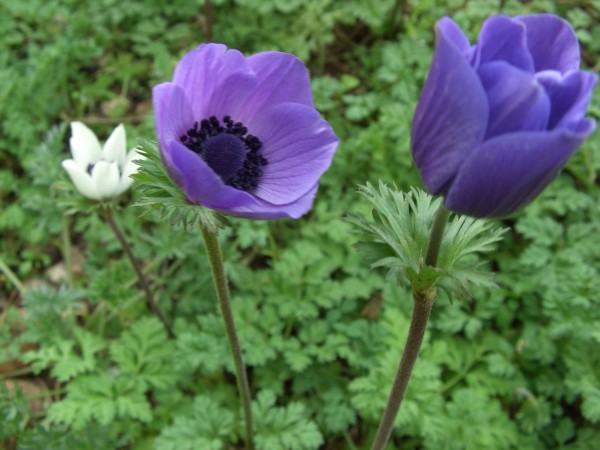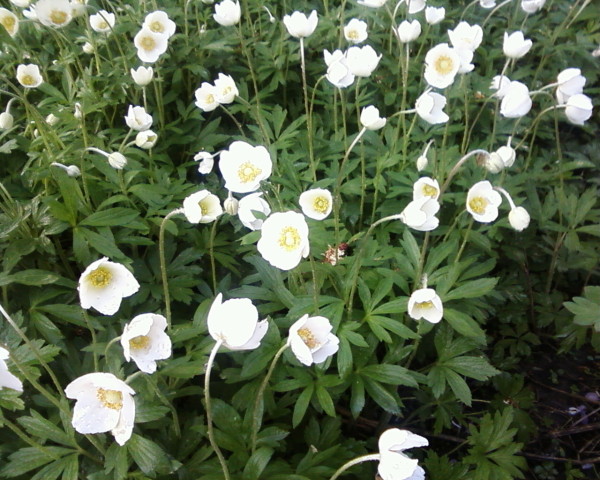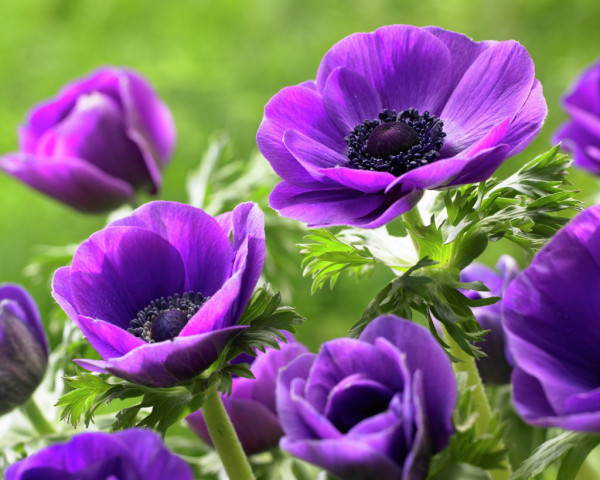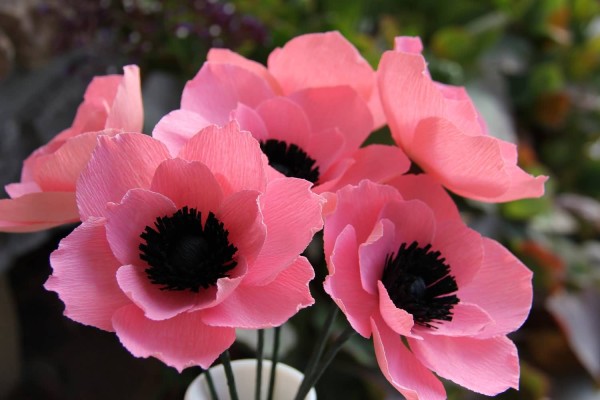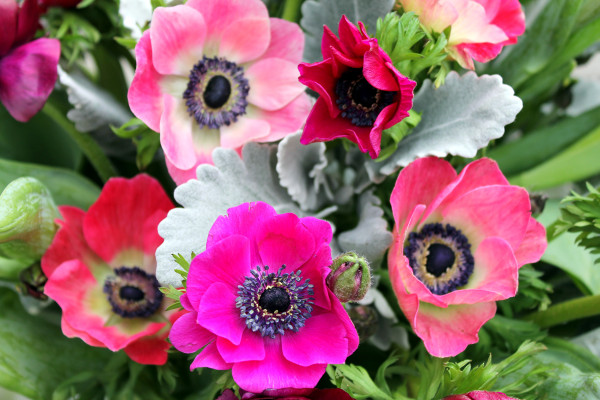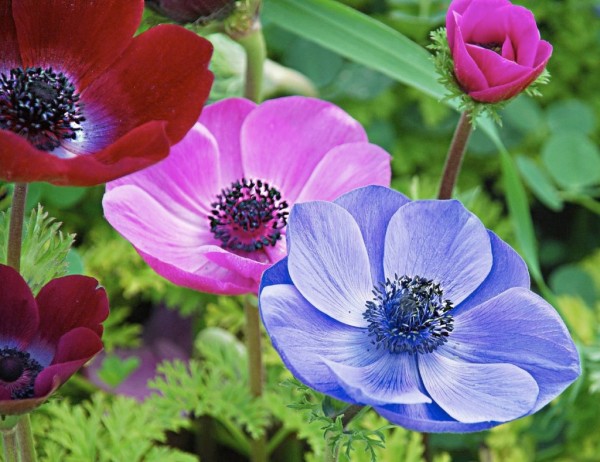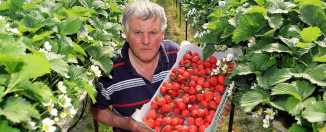Anemones: planting and care
The petals of this plant tremble even from the faint breath of the breeze. Therefore, he was called anemone, which means "daughter of the winds". This flower grows everywhere in temperate latitudes. Let's talk about how to grow them.
Content
Planting anemones
Anemones are planted with tubers or seeds. If you decide to just buy the seeds of this plant in the store, then you must take into account that they have very poor germination. Therefore, before planting, the seeds should be treated with a special agent that increases the percentage of germination. Please note that plants grown from seeds are only capable of flowering after three years.
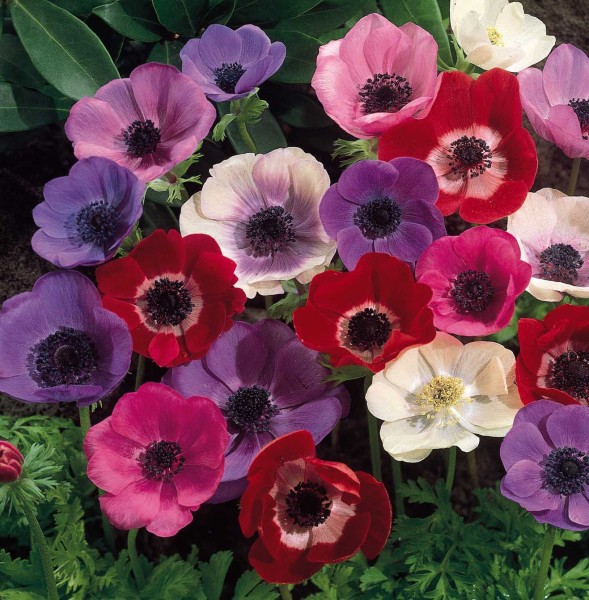 Planting anemones with tubers requires special preparation. For this, the planting material is left for some time in warm water. Once the tubers have swollen, they can be planted in pots to germinate. For planting anemones, a mixture of sand and peat is used. Pre-moisten the soil and plant the tubers 5 centimeters deep. Remember to plant the anemone tubers with the pointed end down. If you cannot determine exactly where the top of the tuber is, then plant it on the side. Water the planting site well after planting.
Planting anemones with tubers requires special preparation. For this, the planting material is left for some time in warm water. Once the tubers have swollen, they can be planted in pots to germinate. For planting anemones, a mixture of sand and peat is used. Pre-moisten the soil and plant the tubers 5 centimeters deep. Remember to plant the anemone tubers with the pointed end down. If you cannot determine exactly where the top of the tuber is, then plant it on the side. Water the planting site well after planting.
House anemones
These flowers can perfectly exist in the microclimate of the apartment. To do this, they are planted in ordinary ceramic pots. Take clay soil for indoor anemones, intended for indoor plants. It is best to buy the appropriate primer in the store. For growing this flower, pots over 20 cm in diameter are suitable. In this case, 5 seedlings are planted in one pot. So you get up to 150 flowers from one pot per season.
 Good lighting is important for anemones, but it should not be in direct sunlight. They can scorch the delicate leaves of the plant. Mostly indoor anemones bloom in winter, so use fluorescent lamps as additional lighting.
Good lighting is important for anemones, but it should not be in direct sunlight. They can scorch the delicate leaves of the plant. Mostly indoor anemones bloom in winter, so use fluorescent lamps as additional lighting.
Water the plant frequently, the soil of the plant should always be moist. Good drainage is essential to prevent root decay. Water the anemone twice a week during the summer and do it more often during the flowering period. To prevent fungus on the leaves, do not spray the plant.
Anemones in the open field
If you decide to grow this plant on the street then it is important to choose the right place for the successful growth of the plant. For the normal development of anemones, a spacious shaded place is suitable, protected from all directions from gusts of wind. Keep in mind that anemones grow very quickly, but their root system is particularly fragile. Therefore, nothing should interfere with the roots of the plant.
These features of the plant should be decisive for the choice of soil. Ideal for anemone loam or peat-deciduous soil mixture. If it is impossible to provide such a soil, add sand to the soil. This will improve the quality of the soil. If the soil in your garden is too acidic, then add dolomite flour or wood ash to it.
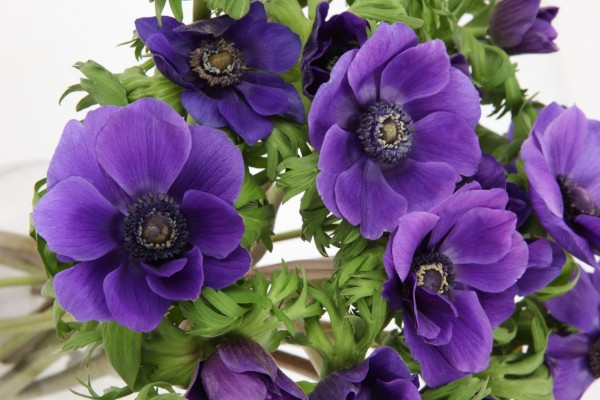 As you remember, anemone seeds have a low germination rate. To some extent, this problem is solved by freezing.
As you remember, anemone seeds have a low germination rate. To some extent, this problem is solved by freezing.
- Mix flower seeds and sand in a 1: 3 ratio. Peat can be used instead of sand.
- Spray this mixture with water and keep moist until the seeds are swollen.
- Place the seeds, along with a small amount of substrate, in a suitable pot and mix. Moisten the mixture slightly.
- Transfer the container to a ventilated area and keep it there at a temperature no higher than 5 degrees until the sprouts hatch.
- Move the container outside and bury until spring. Sprinkle this place on top with sawdust to protect it from frost.
- When spring begins, dig up a container and transplant the sprouts into pots.
Care for anemones
It is not difficult to care for this plant. It is only necessary to ensure the optimal level of moisture. Otherwise, these flowers are unpretentious.
For long-term preservation of moisture, mulching of the soil should be done immediately after planting. This can be done with linden, oak or ash foliage. Humus can be used instead of leaves. Form a layer over five centimeters. This will also allow you not to often weed the area with anemones.
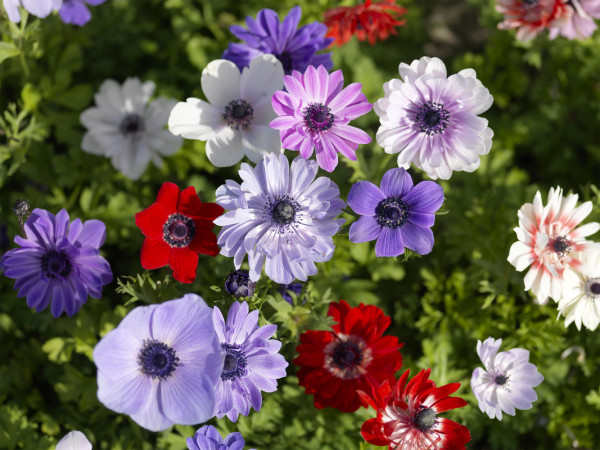 During the budding period, water the plant weekly. In summer, with warm weather and regular rains, anemones do not need to be watered. It is best to use water that has been pre-warmed by the sun. It is necessary to water the plant either in the morning, until the bright sun has risen, or in the evening before sunset. To prevent stagnation of moisture at the roots, loosen the soil regularly. Do not use metal tools for this, so as not to damage the delicate roots. Rather, loosen the soil with your fingers.
During the budding period, water the plant weekly. In summer, with warm weather and regular rains, anemones do not need to be watered. It is best to use water that has been pre-warmed by the sun. It is necessary to water the plant either in the morning, until the bright sun has risen, or in the evening before sunset. To prevent stagnation of moisture at the roots, loosen the soil regularly. Do not use metal tools for this, so as not to damage the delicate roots. Rather, loosen the soil with your fingers.
In the first year after planting, you should not apply additional fertilizers. But from the second year, every spring the anemone must be fed with organic fertilizers. It is best to use biohumus formulations, as this plant does not welcome organic manure. In the autumn, apply mineral fertilizers to create a supply of trace elements for the anemone for the next year.
Adult plants that are already 5 years old must be separated. To do this, dig up the anemone, carefully remove the soil and cut the rhizome into pieces so that at least one bud remains in each part. Cut off places are treated with crushed coal. The rhizomes prepared in this way can be planted in a new place.

